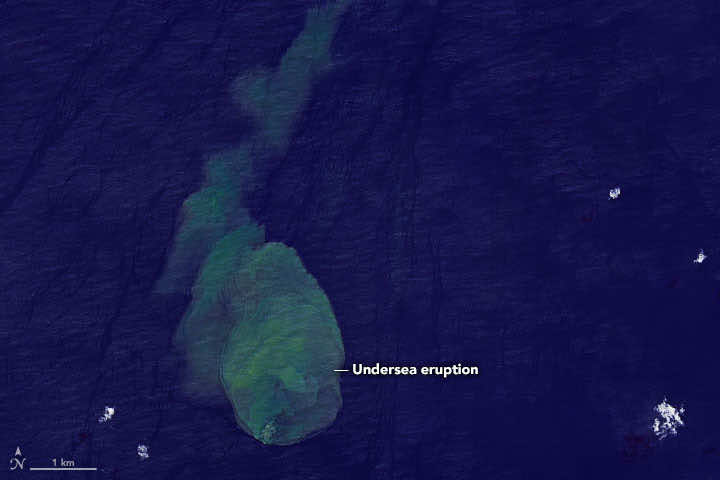The Kavachi volcano in the Solomon Islands, one of the most active undersea volcanoes in the Pacific Ocean and best known for its shark population, is spewing clouds of smoke, NASA said.
NASA published satellite photographs of the erupting undersea volcano on Twitter. On May 14, a plume of discoloured water was emitted from the Kavachi Volcano, located about 24 kilometres south of Vangunu Island. The photos were captured by the Landsat 9 satellite’s Operational Land Imager 2.
According to NASA’s Earth Observatory, plate tectonics formed Kavachi, which began erupting in October of last year. According to the new satellite data, there will be activity on multiple days in April and May 2022. These superheated, acidic water plumes typically contain particle debris, volcanic rock fragments, and sulphur.
The sharks living there are unaffected since marine mammals can thrive in severe conditions by enduring hot and acidic water. A 2015 trip, documented in a paper published in Oceanography, discovered hammerhead and silky sharks surviving in the volcano’s crater’s hot and acidic environment.
“The ecosystem that is supported by the extreme environment of Kavachi’s crater may offer clues to the types of animals that have survived past major changes in ocean chemistry and those that will thrive in future ocean conditions,” the study said.
Furthermore, NASA stated that significant eruptions at Kavachi were last observed in 2014 and 2007. However, the space agency also indicated that it erupts almost continuously, and residents of adjacent populated islands frequently describe seeing visible steam and ash.
The earliest reports of its existence were made in 1939. Since then, at least 11 large eruptions have occurred, each of which has resulted in forming a new island. “But the islands, up to a kilometre long, have been eroded and washed away by wave action,” NASA said.

